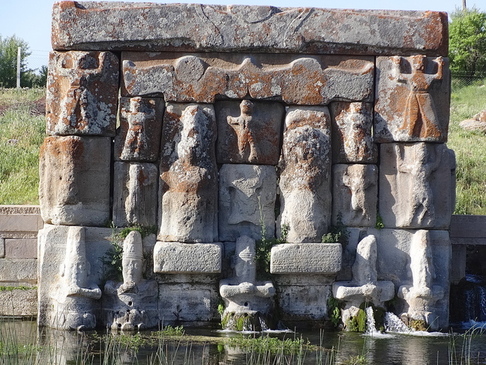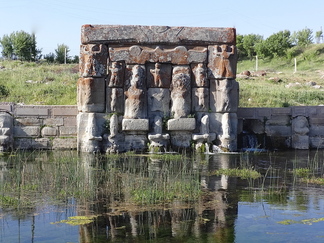“Mauve Spring” or “Plato’s Spring”
If you’re staying in Beyşehir and have access to a car you might want to drive along the east side of the lake and follow the signs to a pond at Eflatunpınar overlooked by what appears to have been the base of a giant Hittite statue with carvings dating back to the 13th century BC. These include images of half-human monsters bearing winged sun discs, bulls and gods with holes drilled into their skirts to let them act as fountains as well as images of the sun god Estan and the sun goddess Wurusemu.
Eflatunpınar appears on Turkey’s list of tentative world heritage sites which hasn’t saved it from being corralled into an effective picnic area.

Transport info
Without a car you would have to take any bus or dolmuş heading along the eastern side of Lake Beyşehir and ask to be dropped at the junction for the village of Sadıkhacı, 8km down the road – the turning for Eflatunpınar is just before the village on the left.
The road slopes gently upwards but there’s no shade so if you plan to walk wear a hat and take plenty of water.
Taxi drivers from Beyşehir will run you here for an extortionate fare.
Read more about Eflatunpınar: http://www.turkeyfromtheinside.com/blogbloggingaboutturkey/entry/71-the-hittites-with-rubbish.html
